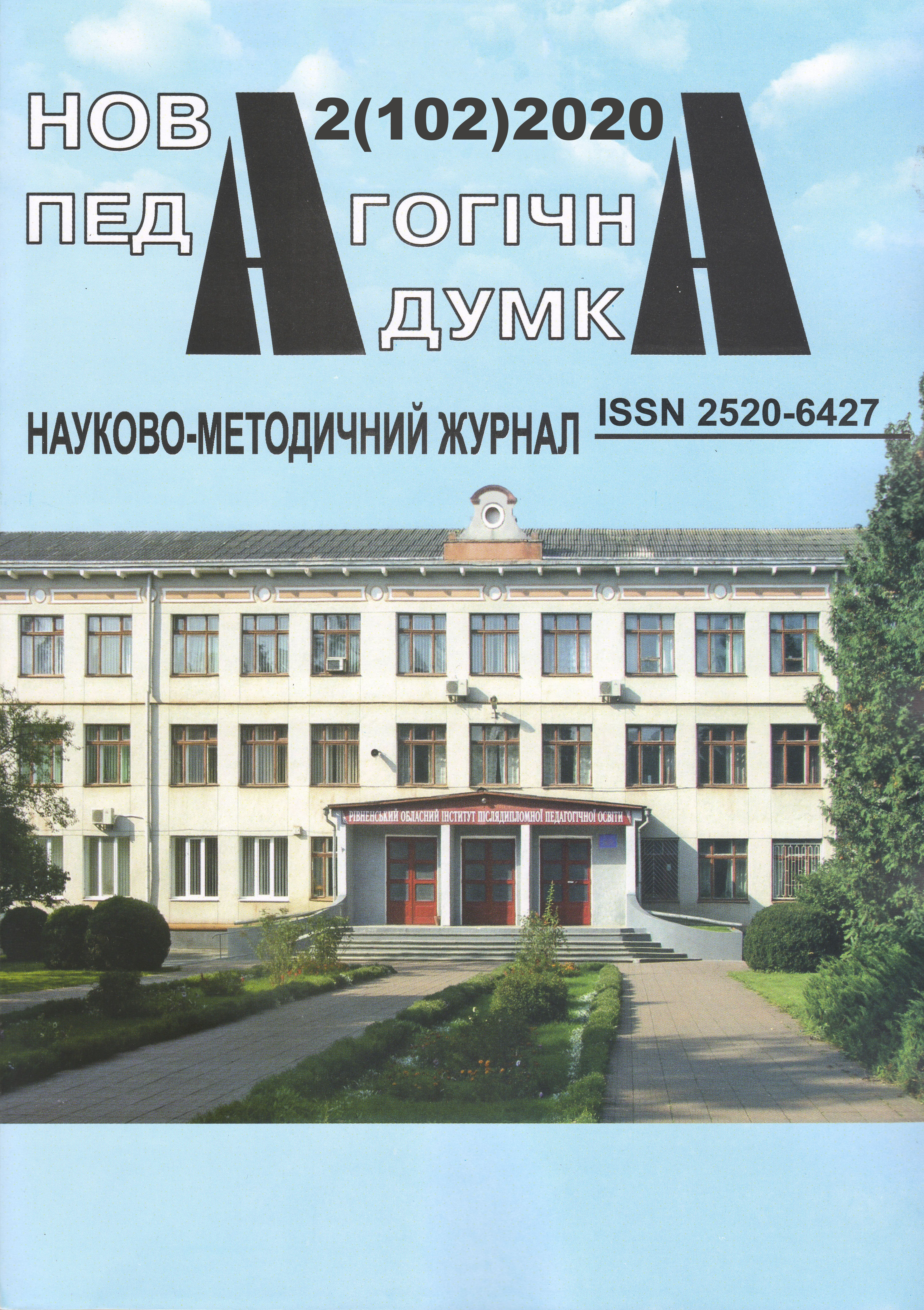Model of formation of readiness of primary school teachers for innovative activity in the conditions of inclusive education
Abstract
The article theoretically substantiates and develops a model of forming the readiness for innovative activity of elementary school teachers in the conditions of inclusive learning, which allows to improve their professional activity in the context of modern changes in education, to interest and motivate students to study, to create an optimal educational environment for them. The analysis of the works devoted to this problem allowed us to identify the components of this readiness: motivational, cognitive, activity, reflexive and emotional. According to the results of the analysis of scientific researches, the following main components are included
in the structural-functional model of formation of readiness for innovative activity: target, content, activity and result. The target component defines the purpose of the readiness formation and the reason for the readiness to be desired and valuable for the specialist and his professional development. The content component defines the peculiarities and specifics of the formation of readiness for a certain type of activity, built taking into account methodological approaches and principles of training of specialists. An activity contains a procedure, steps and well-grounded measures for forming readiness for a certain activity. In addition, this block reflects the author’s approach to solving the pedagogical problem, as well as the pedagogical and methodological conditions that ensure the formation of readiness for a certain type of activity. The result determines the peculiarities of diagnosing the level of readiness for a certain type of activity, the procedure of diagnostics, the levels, criteria and indicators, according to which the obtained data are verified during the pedagogical experiment. The criteria of
readiness for innovative activity of elementary school teachers in the conditions of inclusive learning (target, knowledge, operational, corrective and volitional), their
indicators and levels (initial, average, sufficient and creative) are also determined.





